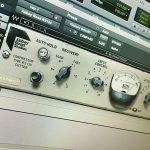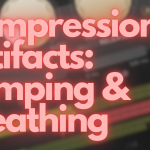
Fundamentals ARE “Running”

There’s a saying you have to “learn to walk before you can run”, and I think a lot of us mistakenly apply this to mixing and audio production. I don’t think that’s necessarily the way it works or, at least, it doesn’t work the way we think it does.
With audio production, the fundamentals are EVERYTHING. Unfortunately, we often buy into the myth that there are some crazy, esoteric techniques out there that are going to magically change the game for us. We think we just need to learn some secret technique(s), and then we’ll live happily ever after kicking out brilliant mixes with a couple of ninja audio moves.
I wish this were true. It would’ve made advancing a lot easier and faster.
The truth is the majority of what I do on a mix–live or in the studio–is done with EQ, some channel compression, a delay and reverb here and there, and balancing and driving the faders. And by “majority”, I’m not talking 51%. It’s more in the 90-98% range.
The problem with the mindset that there are all these extra things out there we need to learn is that mindset distracts our focus away from mastering the fundamentals that will actually give us the big wins.
So instead of taking time to really master something like an EQ, we’re searching the interweb and spending hours going through videos and tutorials on all kinds of other things. It’s not that those other things don’t ever matter or make a difference. They just don’t make as much of a difference as we often think or want them to.
For example, consider parallel compression. I like parallel compression on some things, but it’s a technique I think has become waaaaaay over-hyped. I’ll give you two reasons why we do not need parallel compression:
1. Serban Ghenea
As far as I’m concerned, Serban Ghenea (pronouced gen-EE-uh) is “THE” mixer in popular music right now and for probably the last 10-15 years if not longer. From what I’ve learned, he’s a pretty private and humble guy and doesn’t do a lot of interviews. This is why we hear a lot of other names more often than Serban. But if you look at the charts, Serban has been owning them across multiple genres for a very long time. Seriously, go look at his website and everything he’s done from Taylor Swift to Kelly Clarkson to Beck to the Weeknd to Keith Urban to the Bee Gees.
Serban may not talk much publicly, but his partner John Hanes has been answering a lot of questions on how they do things over at Gearspace.com. One thing John mentioned is they don’t use parallel compression. Now, go look at all the hits they’ve worked on and start listening and keep in mind there is NO parallel compression. Not on the drums. Not on the vocals. Not on the guitars. Maybe some slips in here and there because a producer was using it and they kept it, but it’s not something they use by default.
If they can pump out all those hits without it, that means WE don’t need it, either.
Now, I can already hear responses to this: But I can’t mix drums without parallel compression…
Really? You sure about that?
2. Tom Lord-Alge
Tom Lord-Alge won his first Grammy for best engineering on his FIRST big project back in the mid-80’s, and then through the 90’s and early 2000’s he and his brother owned alternative and rock mixing. Tom says he’s mixed everything from “Hanson to Manson”, and he is still an in-demand A-list mixer.
Like his brother Chris, TLA is well regarded for the drums in his mixes, and TLA does NOT use parallel compression. Want examples? Check out the Wallflowers Bringing Down the Horse record or the first two Dave Matthews Band records that made Carter Beauford a highly regarded drummer. How Good it Can Get by the Wallflowers is a personal favorite, but his discography is full of great examples. Here’s a live one he mixed for One OK Rock not too long ago.
No. Parallel. Compression. on the drums. How does he do it? As Tom likes to say, “It’s the EAR, not the gear.”
Side note speaking of One OK Rock, TLA has been mixing a lot of live stuff for them, and I asked him a lot of questions about these projects since I also love doing live projects. Two words stuck out to me from those conversations: No overdubs.
But I digress….
Now, I’m not saying parallel compression is bad, and I’m not saying you shouldn’t use it. I’ve used it for almost 20 years and don’t plan on stopping. What I am saying, though, is it’s not as big a deal as we often thing and it’s not something we need to use.
When I am on-site training and coaching volunteers and staff, if we even touch on it it’s usually one of the last things we do and in most cases I don’t use it. Why? Because it’s not a fundamental of mixing, and we don’t need it.
The same goes for a lot of other techniques out there that are often paraded as the greatest trick ever. They aren’t worthless things and do add to the whole picture, but they are not the whole picture. These things rarely make or break a mix.
The fundamentals of mixing are not walking. They are the running part. If you and/or your team want to get better at running, I’d love to chat with you about remote and in-person training and coaching. Drop me a line through my Contact page, and we can get started.

 Previous Post
Previous Post Next Post
Next Post


